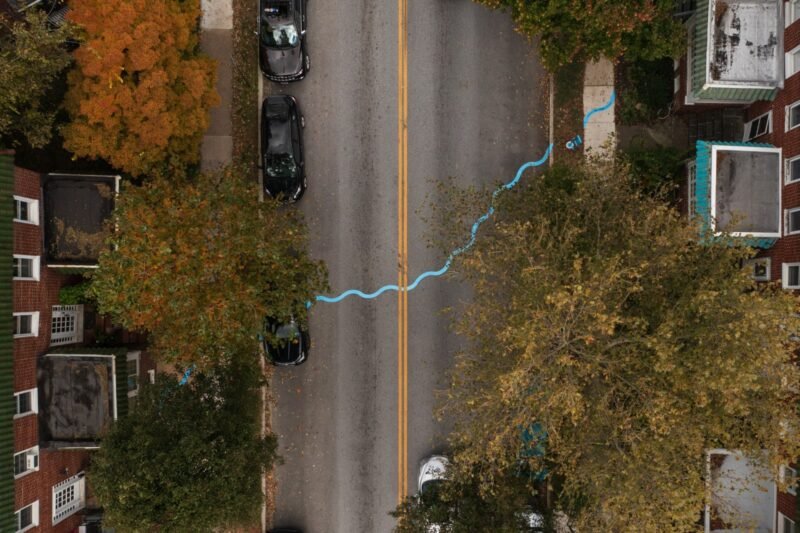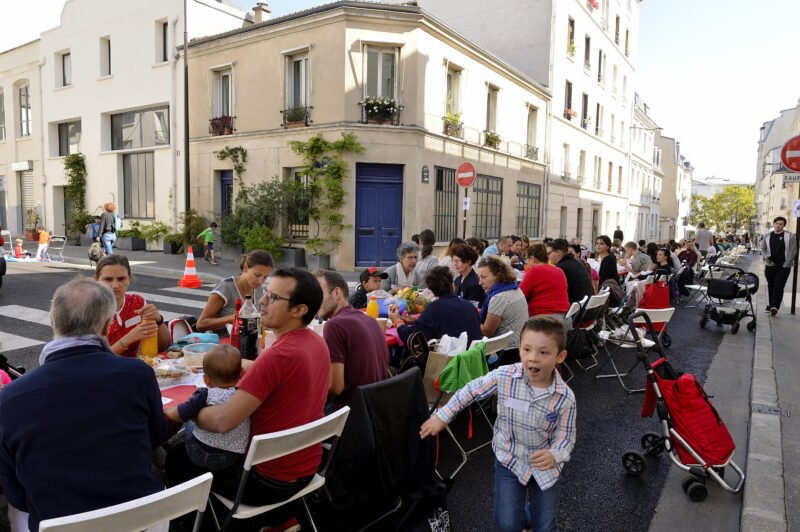Play With Your City
This post is written as a conversation with ‘I, Eyes And JR’ By Ajantriks, ‘Pop-Up City As Museum’ by Alexandra Mientjes and ‘New York’s Underbelly’ by Anna Triboli.
As we know, urban interventions in the streets differ a lot. Not only for the scale or the media used but also, as Jan Vormann already pointed out in his interview, for the aim that the artist follows in the city. Claiming space in society, underlining social or political problems, performing an idealistic advertisement of your ideas and/or yourself or simply gathering people in the street and play a bit with the city. I would like to present hereby a pair of examples that I believe are made with a sincere playfulness and in which we can find a unique scale of interpretation. In particular, urban interventions which aim is to decontextualize already existing elements of the city.

First representative of this category could be Roadsworth, a canadian artist who plays a funny game with road paintings, choosing a delicate irony to change the meaning of signs, as he explains:
“In the spirit of Marcel Duchamps, all I had to do was paint a mustache on the Mona Lisa so to speak, to introduce a glitch in the matrix.”

In the same line, we could talk about Mentalgassi, a Berlin-based artists collective in which work we can find the same easiness and vivacity in surprising us with the common urban furniture we (don’t) see everyday.
With a similar spirit, Rebar studio, based in San Francisco, turns our parking lots in small gardens for a day. They call this practice ‘tactical urbanism’, which means short and temporary changes in the surroundings, as a spark of a bigger transformation of the environment. The particular aim of this last work is a bit more critique and has a long-term project in the background, but it indeed succeeds in the process of decontextualization of common street elements and use them in a different way from the one they were originally thought.

In the same line of critique aim to wake up people responsibility are positioned interventions like Guerrilla Gardening and similar, that are luckily becoming more and more common in our public space.
Having or not a big, maybe commercial project in mind, but nevertheless always looking for the good spot, because they want people to notice their work, artists surprise us everyday with their interventions and give their contribution, I believe, to the richness of the city in its contemporary form.



